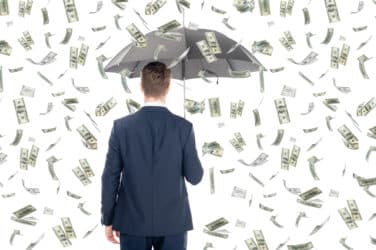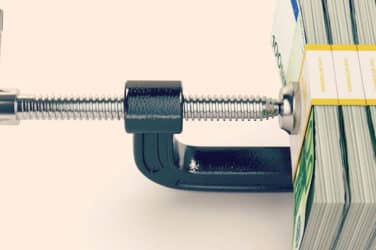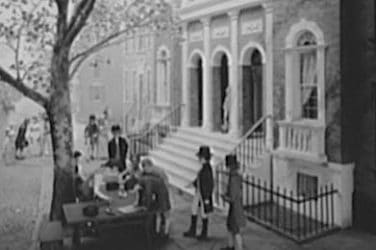Where have yesterday’s automated market makers gone?
Did they just disappear like the dinosaurs? Or have they evolved into something else – high-frequency traders?
Well, not exactly.

Bill Harts, MMI
Bill Harts, Advisor at Modern Markets Initiative, explained that automated market making got its start in the early 1990s at Shearson Lehman Brothers and ATD in order to introduce wholesale technological efficiency to the age-old manual process. He said these early efforts depended on markets like the Cincinnati Stock Exchange (later NSX) and hacking Nasdaq APIs for connectivity. But it wasn’t until low-cost markets like Island and BATS embraced the strategy that firms began to replace human market makers with machines on a large-scale basis.
But then in the late 1990s and into the early 2000s, a pair of scandals involving collusion by Nasdaq market makers and wrongdoing by NYSE Specialists hastened the adoption of automation.
“Both institutions and their regulators realized that relative to human trading, the immutable audit trail created by automated market making was much easier to surveil and monitor for abuses and so they each adopted rules that encouraged the AMM model,” Harts said. “By the time this article (At the Speed of Light) was written, most Nasdaq market makers and NYSE Specialists (since renamed Designated Market Makers) were automated.”
So, are yesterday’s Automated Market Makers now today’s HFTs?
Yes, some are. But Bryan Harkins, head of U.S. Equities and Global FX at CBOE Holdings, reminded that being a market maker, even an automated one, still implies that the firm has some sort of obligation to provide liquidity – either to an exchange or a firm. It must participate in the market – even in times of crisis. Back in May of 2010 during the ‘Flash Crash’ HFT firms exited the market when things went haywire – and some argued then that HFT should be forced to provide liquidity during these times when the market needed it most.
“HFT is akin to a trading strategy while dedicated market making is different,” Harkins said, again pointing to the obligation market makers have. “Market making today remains highly automated. But when looking at HFT, things are different.”
When breaking down HFT strategies, Harkins said that while some depend purely on speed as the main thrust of profits others rely more on technology as the main component for alpha generation. And for others, it could be an amalgam of the two. Still yet, it could be genuine idea generation and then technology enabling that strategy to be implemented.
So, HFT might really be a derivative of AMM then.
“As I saw automation evolve, I wouldn’t say HFT just appeared. Automated market making came first, “Harkins said. “Then, we saw HFT came second as a by-product of that”

Bryan Harkins, CBOE Holdings
Modern Markets’ Harts weighed in on the importance of HFT to today’s market. “Now today, most continuous, two-sided liquidity provision is done by computers using high-frequency trading tools and techniques, including most of the stocks on the venerable NYSE. Firms like Citadel, GTS, Hudson River, IMC, Quantlab, Tower and Virtu routinely make electronic markets in thousands of stocks, ETFs, options and many other instruments without regular human intervention.”
As Harts sees it, investors have benefitted greatly as the spreads they used to pay to human intermediaries have collapsed in response to the efficiency automated market making has brought. CBOE’s Harkins agreed.
One big happy market, right?
“Well, I can say that without AMM or HFT strategies the market could not exist,” Harkins said. “The market has evolved so much as have the skill sets that turning the clock back the clock is just not possible.”
This article originally appeared in the October 2006 edition of Traders Magazine
By Michael Scotti
Today the United States, tomorrow the world. That’s the mantra guiding a group of high-velocity traders-a.k.a. automated market makers-who currently dominate U.S. equities and who are setting their sights on other asset classes and overseas markets.
Right now, this largely unknown, media-shy group of broker-dealers and proprietary trading shops is involved in more than half the trading volume in U.S. equities, according to market participants. Their computer-generated quotes are at the inside market-national best bid, best offer-for every large- and mid-cap stock, sources say.
And their presence is growing, as some estimate their market share could be as high as two-thirds of all trades.
They are to trading what Lamborghinis are to cars: smart, sleek, powerful and fast. Their modus operandi is to use the fastest trading tools on the Street, and to spray the market with millions of orders, with cancels immediately behind them. Besides the gobs of short-term liquidity they provide today in equities, their other contribution is the flickering quote.
“When the human market makers stopped sitting in front of a screen, they were replaced by these automated trading strategies,” says Bryan Harkins, head of sales and strategy at Direct Edge ECN, “and the market couldn’t exist today without them.”
Six People
Others agree. “Algorithmic trading wouldn’t work if there weren’t automated market makers taking their trades,” says Gary Wedbush, executive vice president and head of capital markets at Wedbush Morgan Securities. The firm clears the trades for many of the biggest players in high-velocity trading.
Brian Hyndman, senior vice president at Nasdaq, offers a reason for the increase in automated market making in recent years. A large firm “could make all of its markets with six market makers now, whereas in the past they may have needed 70,” he says. “The systems will make the markets that those traders want to make, and they can be more aggressive or less aggressive, but you don’t need to monitor each stock constantly during the day.”
And the number of new entrants in the U.S. is growing steadily, according to Ted Myerson, president of FTEN, a service provider to prime brokers and hedge funds in the ultra-high-frequency space. Pioneering firms like ATD, GETCO and Tradebot are familiar to followers of the high-frequency trading game. The latter two firms also provided investments to BATS Trading, an ECN-turned-exchange designed for these rapid-trading firms.
But Myerson, whose firm’s clients trade 1.5 billion shares each day, points out that the industry includes dozens of other firms that no one has ever heard of. “There are many more firms that don’t have a name and won’t share it, and you’ll never know they are pounding out 100 million or 200 million shares a day in the marketplace,” says Myerson, whose firm’s business has tripled since January. There’s another group doing between 20 million and 50 million shares a day that he expects to near the 100 million mark soon because the business is scalable.
This new breed of automated firms is being incubated at many of the high-frequency shops. After a handful of years, a smart programmer or a group of them will start their own shop once they learn the game. These new firms will typically launch with between $10 million and $100 million in capital, Myerson says. That capital gets multiplied as they gain additional leverage through portfolio margining accounts at their prime brokers. “The intelligence and the sophistication are only increasing,” he says.
Heavy Trading
Joe Gawronski, president of Rosenblatt Securities, points to a story that he thinks is emblematic of today’s market. He called on a new prospect, a small shop by traditional standards. When he learned in the initial meeting that the client had about $8 million under management, he wasn’t expecting the conversation to go much further. However, when the prospect said he executed between 5 and 10 million shares a day, Gawronski took notice, realizing how much of an impact even a small firm can have on trading volume today. “These high-frequency guys really live up to their name,” he says, “and they can have very little money under management and trade an awful lot of stock.”
To make money in automated market making, three things are necessary: fast and accurate market data, smart trading strategies or models, and low-latency trading. Call it the three-legged stool of high-velocity market making-speed alone isn’t enough, since firms need superior models. These firms gain the necessary speed by putting their servers right at the data centers of exchanges and ECNs. This is called co-location and allows them to get their market data quickly and their trades executed fast. This low-latency strategy shaves milliseconds off the placing of an order and an execution.
“If the difference between executing in 10 milliseconds and one millisecond is important to you, then co-location is a significant advantage,” Direct Edge’s Harkins says. But it’s not for everyone. In fact, even firms that use cancel-replace strategies can still be profitable without having their models and servers co-located at an exchange. Sometimes just having a direct pipe into an exchange is sufficiently fast enough to employ a high-frequency strategy, he says.
Playing Games
The notion that electronic trading is becoming more like playing video games is also true for the high-frequency market makers. They are using chips designed for video games to more quickly process the market data that enters their models, says Jeromee Johnson, president of 3D Markets, a firm that offers crossing products in options. “It’s all about speed,” he says, for the top dozen or so firms that are pure market makers. Their investment in technology is “ongoing and significant” to keep their edge. Some firms, he adds, are investing $2 million every other month on new servers. But it’s not just speed that’s important, because they also “spend half their time in the classroom reworking their models,” Johnson says.
Dmitri Galinov, a director within Credit Suisse’s electronic trading group, AES, sees strong evidence in the growth of automated market making, most of which is event-driven. Their heavy trading activity is obvious, he says, during times of extreme volatility. “When volatility spikes, you can see the volume on Nasdaq and BATS just exploding,” says Galinov, who oversees Credit Suisse’s dark pool CrossFinder and AES’s order routing in the U.S.
Because both Nasdaq and BATS are the two fastest destinations, they see a greater percentage of the automated market-maker volume, Galinov says. Nasdaq has also been involved in co-location the longest and is an old hand at the speed game. That’s due in part to its purchase of the INET ECN in 2005. Nasdaq’s Hyndman notes that the number of firms co-locating their servers at the exchange’s data facility has doubled over the last 12 months.
Galinov has also noticed another phenomenon: When an exchange increases its rebate, liquidity providers flock en masse to trade there. So pricing is important to many of them. NYSE Arca, he points out, saw a boost in its market share after raising its rebate recently. As soon as the market makers adjusted their models, “you could see Arca picking up market share in a period of days,” Galinov says. That is also another reason for discussion in the industry about increasing the 30-mil cap on taking liquidity. If the cap were removed, then venues could offer higher rebates to liquidity providers and attract more players to post in the market.
Strategies Differ
Many echo Galinov’s observation about the importance of the rebate, but Joe Ratterman, president of BATS, points out that there are many different strategies and market makers aren’t of the same mind-set when it comes to this topic. For example, Ratterman says, 100 firms might give “50 different answers” about how important the rebate is. “Some liquidity providers are agnostic about the rebate,” he says. They may add liquidity when the rebate is high or add liquidity when the rebate is low, while others may be “half add, half take.” The rebate, he says, is incorporated into the algo “that detects the current profitability of being at the bid or offer for a particular trade for a particular firm.”
Hyndman of Nasdaq notes that some firms wouldn’t make money without the rebate, while others make money without the rebate, “so that’s extra money for them.” While the importance of the rebate varies from shop to shop, “rebates create better economics, and that ultimately drives more volume,” he says.
Liquidity providers pursue different strategies, agrees Ratterman. Some will make one- or two-sided markets in a broad range of stocks. Others will trade a narrow segment of an industry and have a niche. Much of this depends upon the sophistication of the firm and the evolution of its algos. But most automated market making, he said, is about “real-time triggers and feeds that dictate when to be on the bid or offer.” For the most part, automated market makers post and add liquidity about 90 percent of the time.
Shuffle the Deck
One source compared automated market making to a card game. A market maker’s cancel-replace strategy is similar to a card player getting his cards and folding almost immediately. When trading, these cancel-and-replaces are done millions of times a day, mitigating risk by exposing the order to the market for a brief period of time. That’s why decreasing latency-or delay-in systems is so important.
“Automated market makers are very concerned about latency,” says Ratterman. The longer it takes to modify an order or to cancel and replace it, the longer that market maker is at risk by being exposed to the market. By driving down latency to near zero, he says, BATS is reducing that risk. That might also enable automated market makers to post larger markets, too. “Anything that reduces latency, they’re in favor of doing,” he adds.
The top automated market makers make one-10th of a penny roughly 60 percent of the time, and lose one-10th of a penny 40 percent of the time, estimates 3D’s Johnson, who wrote about automated market making a couple of years ago when he was an industry consultant. At the time, automated market making made up about a third of the equity trading volume in the market or slightly more. But that 10th of a penny, he says, adds up when trading “millions of times a day.”
The early days of algorithmic trading, just as the electronic market makers were coming into their own and the traditional market makers were on their way out, Johnson says, was a period of dislocation and a heyday for profitability for automated market makers. Johnson metaphorically described the early high-frequency traders as riding “bulldozers in a field racing after a sack of gold.” Now, as the business has become more competitive and faster, they are “zipping around on motorcycles, trying to pick up a penny with chopsticks.” Stocks now trade in microseconds.
Tal Cohen, a senior vice president at Instinet, worked with many of its high-frequency trading clients on the INET platform, which Instinet owned before Nasdaq acquired it. He compared their high-end technology to a powerful vacuum, sucking up orders in the marketplace-and with it, the one-10th of a penny per share. “They have to trade in a high-velocity manner” and do tremendous volume, or they won’t have made much money at the end of the day, he says.
“They’ve got it figured out,” says Wedbush. “These automated market makers and high-frequency traders have created a business model that can make good profits on spreads that are effectively less than a penny.” In what may come as a surprise to some, Los Angeles-based Wedbush Morgan is consistently ranked as the No. 1 liquidity provider on Nasdaq for both Nasdaq- and NYSE-listed stocks.
Messaging Traffic
The displayed markets and brokers have invested heavily in technology to accommodate and keep up with these high-volume players. And they will continue those investments because they have no other choice if they want to compete.
From the exchanges’ and ECNs’ perspective, their systems face massive message traffic from these market makers due to the barrage of cancel-and-replaces for each stock. Consequently, upgrading their systems is a never-ending battle.
Direct Edge’s Harkins says this is a necessary expense. “Because they control so much volume, and market share can be driven your way, you have to take the bad-the message traffic-with the good-the trades,” he says.
FTEN’s Myerson says he’s seen high-frequency firms with strategies that yield just 100 trades from 1 million quotes entered into the market. Harkins says it is fairly common to see a firm enter “hundreds of quotes” to do one trade.
Brokers, meanwhile, have had to upgrade their own systems just to keep up. In their quest for best execution, brokers need to give clients the best prices in a fragmented marketplace with flickering quotes, according to Jamil Nazarali, a managing director in the electronic trading group at Knight Capital. “We have to look at everyone’s price, and as these quotes keep changing every few milliseconds in so many different securities, we need to have massive computers and pipes that can see all this data, do a very quick calculation and decide where to route,” he says. The return on the investment is minimal, if anything, but Knight has to keep investing in the “arms race,” because of its best-execution obligations. Every broker-dealer is in the same boat. “They’ve raised the bar for everyone,” comments one source, adding that coming in second place when accessing liquidity is not a good business model in trading. Consequently, much investment in technology is required to stay in the game.
Next Option
The next stop for these automated market makers in the U.S. will be the options market, and some of the market structure changes that equities saw could also take hold there, according to Johnson. One driver is the move toward maker-taker pricing at the newer exchanges. With rebates for liquidity providers, many believe that options will be the next asset class for high-frequency traders. Still, that’s a way off, as Johnson estimates that the options market is only about 15 percent of the way toward its evolution.
Today’s automated market makers can make one- or two-sided markets. But for many of them, their profit strategy is to capture the spread between the bid and the offer, just like the market makers of old. Of course, spreads are narrower today, often just a penny or two. Today’s market makers posting liquidity get a rebate from the market centers that brings in additional revenue and helps them provide a tighter market. On the largest venues, the rebate runs from 20 cents per 100 shares to a high of 29 cents. The exchanges and ECNs profit from transaction fees: They charge a fee to liquidity takers-which is higher than the rebate they offer to liquidity providers-and make a spread.
With fully electronic markets, the statistical arbitrage players have essentially been lumped in with the automated market makers, even though their strategies are different in that the latter try to capture inefficiencies in pricing between securities. They may or may not be rebate-conscious. Why have they been painted with the same brush by some? According to Direct Edge’s Bryan Harkins, the stat arbs tend to add liquidity by posting like market makers, and some will co-locate their infrastructure on an exchange or ECN because they value speed. Says Instinet’s Tal Cohen, “These players are so big today, they act like market makers.”
High-frequency trading shops in the U.S. are licking their chops to get into overseas markets, as those markets evolve into a structure more akin to the U.S.’s-one that encourages more competition and supports high-frequency electronic trading. That’s the case with FTEN, whose clients want to replicate their U.S. strategies in other markets, explains president Ted Myerson. “This is going international very quickly,” he says. Although the U.S. is still profitable for these clients, their desire to export their strategies overseas is understandable, says 3D Markets president Jeromee Johnson. He points out that firms can make out like bandits in the early days of a marketplace, when it is transitioning structurally, but that as more of these rapid traders get involved, the market becomes less profitable.
However, the increase in competition among high-frequency traders makes for a healthier market and benefits all investors, says Credit Suisse’s Dmitri Galinov. As spreads narrow due to increased competition, there is more liquidity and costs fall, he says. “The U.S. has the highest turnover and the tightest spreads, followed by Europe, and [then] Asia,” Galinov says. Instinet’s Tal Cohen reports that trading costs in the U.S. are about one-third of what they are in Europe.






